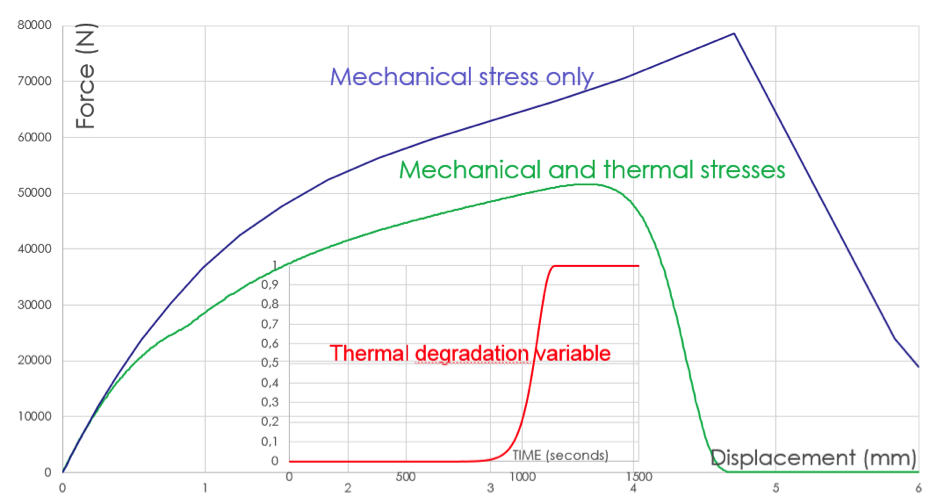Que recherchez-vous ?
Un contenu sur ce site
Une personne sur l'annuaire
Une formation sur le catalogue
Un contenu sur ce site
Une personne sur l'annuaire
Une formation sur le catalogue
Context
Carbon fibers reinforced composites are more and more used in naval, aeronautics and automotive industries. They indeed have many qualities, such as their mechanical strength and their lightness, making their utilization very interesting at a time when sparing energy is a major issue. Nevertheless, the utilization of this kind of material in industrial structures is very recent. Thus, some safety studies have to be carried out to be able to predict their behavior and understand it in every possible situation, for instance in condition of fire. Scientists are asked how much time composite structures can undergo both high heat fluxes brought by a fire and strong mechanical stresses. To answer this question, we have to use simultaneously numerical and experimental methods, which are complementary.
Results
In the literature, it was noticed that when the carbon fiber reinforced composite material is submitted to a given heat flux, a thermal degradation occurs, turning the material into char, whose physical properties are different of the ones of the virgin material [1]. The char is highly porous and its mechanical properties are very weak. Regarding the thermal properties, delamination occurring at the interface between char and the remaining composite reduces the conductivity. Thus, some couplings have been highlighted between the mechanical properties of the material, its thermal degradation and heat transfers. To achieve the objectives of simulating the mechanical behavior of composite structures subjected to fire, we had to investigate these couplings and to integrate them in tools for computational structures. Then, in the frame of this thesis, a coupled multiphysics modelling has been set up.
The input parameters needed for simulation were the following:
These parameters are embedded into the general following integration scheme: at each time increment, thermal degradation is first calculated, using the temperature of the previous time increment and added to the mechanical damage, determined from the applied strain. This thermal degradation coefficient also allows to determine the heat produced by the matrix pyrolysis which is the starting point to update the temperature.
An example of simulation results is showed here above : a composite coupon is simultaneously heated up to 800K in 25 minutes, and submitted to a monotonous longitudinal strain where displacement is given. Results of simulations when the coupon is heated and when it is kept at room temperature are compared. As expected, the thermal degradation variable acts as a progressive damage variable, as the force decreases quite slowly in the case of a heated coupon.
 In a near future, comparisons between experimental and simulation results will be done. Indeed, the final aim is to understand and predict the relative weights of temperature, thermal degradation and mechanical damage on the mechanical residual properties.
In a near future, comparisons between experimental and simulation results will be done. Indeed, the final aim is to understand and predict the relative weights of temperature, thermal degradation and mechanical damage on the mechanical residual properties.
[1] A.P. Mouritz, Z. Mathys, Post-fire mechanical properties of marine polymer composites, Composites structures (1999); 47:643-65.
[2] J.P. Hidalgo, P. Pironi, R.M. Hadden, S. Welch, A framework for evaluating the thermal behavior of carbon fibre composite materials, Proceedings of the 2nd IAFSS